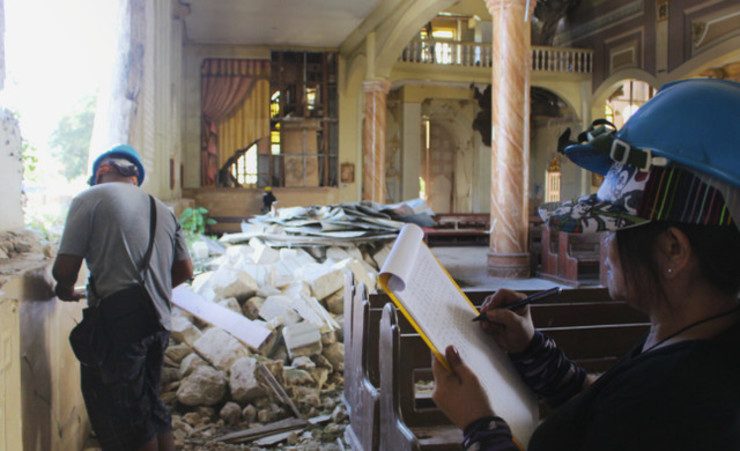SUMMARY
This is AI generated summarization, which may have errors. For context, always refer to the full article.


MANILA, Philippines – Whatever happened to the historic churches, houses and landmarks damaged by the 7.2-magnitude earthquake that hit Bohol and Cebu exactly a year ago?
Most of the iconic structures assigned to the National Historical Commission of the Philippines (NHCP), at least, are 60 to 80% into the pre-restoration stage.
In a report given exclusively to Rappler, the NHCP detailed the status of all 26 historic structures put under its wing. Ten of these structures are in Bohol while 16 are in Cebu.
At least 15 of the structures have completed 5 or 6 out of the 9 steps in the pre-restoration stage.
The report also explains all the steps the agency took, from a rapid ground assessment two days after the earthquake to ongoing tests to prepare the structures for restoration. (READ: Cultural agencies to restore damaged heritage structures)
Read the full report here:
NHCP Report on Bohol and Cebu Historic Structures
The 26 structures assigned to NHCP are composed mainly of old churches, among them the iconic Baclayon Church (Immaculate Conception Parish Church) and Dauis Church (Our Lady of the Assumption Parish Church) in Bohol, and Basilica Minore del Sto Niño and Dalaguete Church (San Guillermo de Aquitania Parish Church) in Cebu – all 4 of which are National Historical Landmarks.
The NHCP also took care of other types of historic build structures such as the ancestral house turned museum Museo Sugbo and Magellan’s Cross – both in Cebu City.
Among the structures are 7 National Historical Landmarks, 6 sites or structures with an NHCP historical marker and 13 Presumed Important Cultural Property or structures not yet declared or marked but are considered historic.
Making a recovery
The report details the status of each of the 26 historic structures, showing that out of 9 steps in the pre-restoration phase, 15 or more than half of the structures are done with 5 to 6 steps.
Here are the 9 steps to pre-restoration:
- Scanning of walls to provide a 3-dimensional scaled model of the structural damage
- Clearing of unnecessary debris
- Installation of braces to prevent further collapse
- Retrieval of objects like carvings, ceiling paintings and stone blocks that can be used in the rebuilding process
- Documentation and labelling of objects
- Storage of retrieved, documented objects
- Material characterization to determine the properties of the structure as basis for restoration work
- Ground penetrating radar tests to determine the geological integrity of the area and see if reconstruction can take place
- Detailed engineering study to assess the structure’s condition and the requirements for restoration
The lengthy and highly technical pre-restoration phase is necessary before actual restoration can take place. It serves as the basis for retrofitting and rehabilitation work. In some cases, the pre-restoration phase can determine whether or not reconstruction is possible or even wise.
“The basis for restoration will be the results of the scientific tests described by the report,” NHCP Chairperson Maria Serena Diokno told Rappler.
The 26 structures are scheduled for a Detailed Engineering Study, the last step in pre-restoration, in late October and December 2014.
Next steps
But the NHCP is already planning for the crucial restoration phase.
In a November conference, both the NHCP and National Museum – the other agency assigned to restore the other quake-hit buildings – will present their findings and accomplishments.
The conference will also be attended by seismologists, geologists, structural engineers, archaeologists and heritage architects.
After the conference, the NHCP will present its restoration plans to parishes, communities and local governments to obtain their consent and hear any concerns before they begin actual restoration.
The NHCP reported that its pre-restoration work has been funded by the National Commission on Culture and the Arts (NCCA) and the Tourism Infrastructure and Enterprise Authority (TIEZA).
More funds from TIEZA, specifically for restoration, are yet to be released. If approved, the NHCP’s 2015 budget will also include a P500 million ($11 million) restoration fund for the damaged structures. – Rappler.com
Add a comment
How does this make you feel?
There are no comments yet. Add your comment to start the conversation.